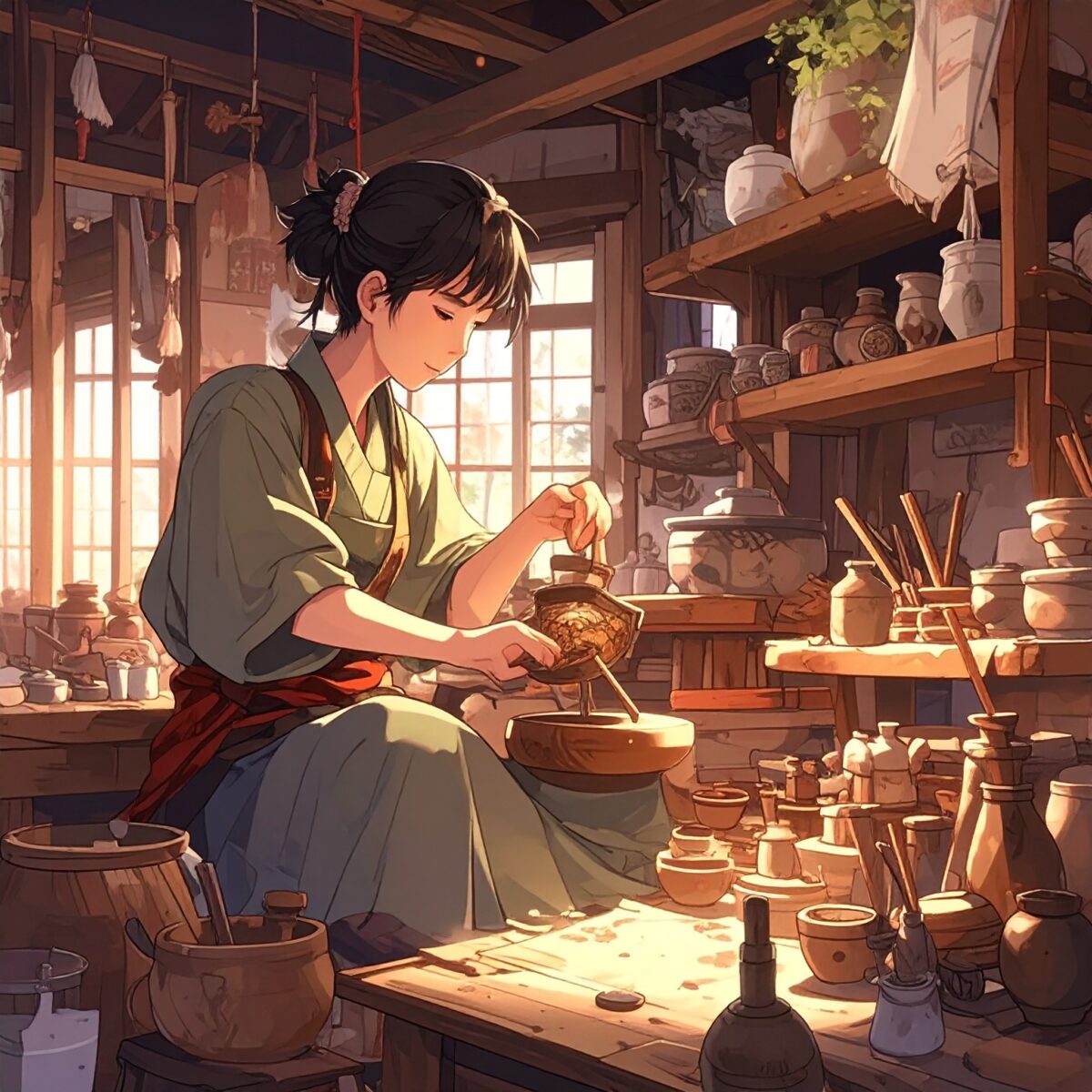Echoes of the Fields, Fragrance of the Wind — The Living Tradition of Japanese Agricultural Life
Dew-kissed rice leaves sway in the morning breeze, and the quiet sound of footsteps presses gently into the soil. The rhythms of Japanese farming carry with them memories not only of the land, but of the body—patterns shaped over centuries of lived experience. Across...
The Beauty That Dwells in Tools — Traditional Japanese Craft as Functional Art
Beauty is not mere ornamentation. It lies in forms refined for use, in the economy of function, in the weight and texture that fit naturally in the hand. In traditional Japanese craftsmanship, this sensibility—known as the beauty of utility—has long been cherished....
From Hand to Hand — The Inherited Spirit of Craftsmanship in Japan
In Japanese traditional crafts, there is more than the pursuit of beauty. Each piece carries within it time spent in dialogue with materials, the mastery of tools, and a spirit of transmission from one generation to the next. What has been passed down over the...
Once a Year, the Everyday Becomes Myth — The Ritual Culture of Japan
Festivals passed down across Japan possess a mysterious power—the power to transform the everyday into the extraordinary. For a brief moment, familiar streets become mythic stages, and hearts are transported into another realm. In that space, ancient legends and...
Festivals as Living Prayers — A Day that Connects People, Deities, and Communities
Festivals across Japan vividly reflect the unique climate, history, and culture of each region. These events, in which people give thanks to the mountains, show reverence for rivers, and pray for bountiful harvests and safety, are more than mere celebrations—they are...
Pillars and Roofs in Harmony — Unseen Architectural Wisdom in Japanese Design
When we look closely at traditional Japanese architecture, we find not only visible beauty but also a profound philosophy embedded in what is unseen. The placement of pillars, the shape of the roof, the proportion of space—all are meticulously considered. Yet none of...
Millennia Whispered Through Wood — Spirit and Craft Alive in Japanese Architecture
In traditional Japanese architecture, wood is far more than just a building material. Trees that have grown for decades or even centuries in the mountains are shaped by the hands of artisans and go on to support structures for hundreds of years. Japanese wooden...
The intangible made visible—spirituality embodied in form
Culture is not composed solely of what can be seen with the eye. Tangible forms such as traditional architecture, crafts, festivals, and clothing are imbued with invisible elements—spiritual beliefs, philosophies, and values. Beyond surface beauty or utility, it is...
To Preserve, To Connect, To Pass On: The Threefold Mission of Cultural Heritage
Cultural heritage is not only a trace of the past, but also a bridge that connects the present to the future. Its role goes beyond mere preservation—it is an ongoing endeavor to engage people living today and entrust values to the generations to come. The mission of...
Wisdom Rooted in Place: How Local Traditions Become National Heritage
Across Japan, distinctive cultural traditions rooted in local climates, geographies, and histories continue to thrive. These practices—once confined to small communities—were born of necessity and refined over generations. Today, many of these regional cultures are...
Stone, Paper, and Flame: National Heritage as a Living Story
Cultural heritage is not merely made of buildings or tools. It is a record—a story. The will etched into stone, the wisdom written on paper, the words exchanged around a shared flame—these are the living memories of Japan, quietly preserved across its many regions....
Millennia of Craft and Spirit: The Timeless Form of Japan
Throughout Japan, cultural heritage lives on—not merely in artifacts of the past, but in the quiet continuity of craft, architecture, gardens, and everyday life. These forms are not frozen in time; they breathe through the sensibilities of people today. Their survival...
Culture Builds a Nation: The Heritage That Shaped Japan
It is often assumed that a nation is defined by its politics or economy. But when viewed through a longer lens, it becomes clear that culture forms the true foundation of a country’s identity. Japan, too, has been shaped not merely by systems of governance, but by the...
What Must Be Preserved: A Nation Protecting Memory for the Future
Cultural assets—be they landscapes, architecture, performing arts, or crafts—are not merely "old things." They are vessels of time, carrying with them the atmosphere of past eras and reflecting the values and philosophies of the people who lived through them. These...
Authority in the Landscape: How Mt. Fuji and Castles Reflect the Japanese Spirit
Within the Japanese landscape, there are elements that speak with quiet authority. Among them, few pairings are as profoundly symbolic as Mt. Fuji and a castle sharing the same frame. When nature and architecture stand side by side, the scene transcends visual...



















